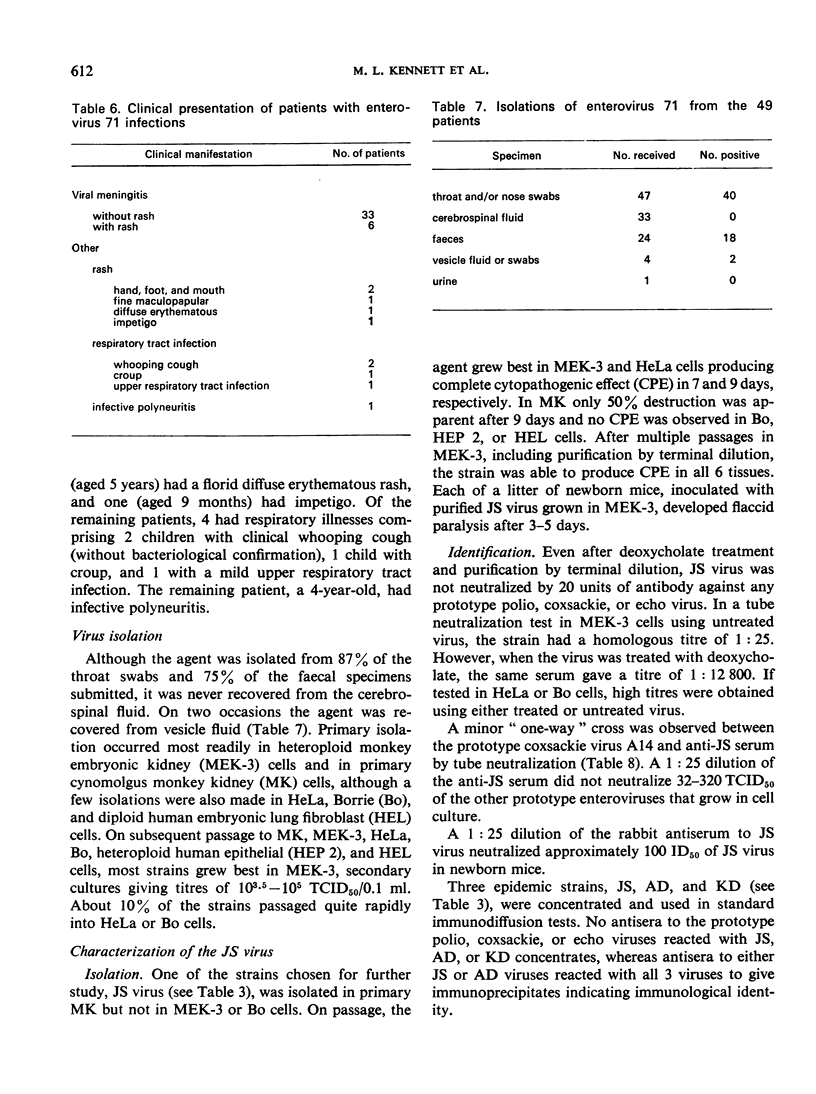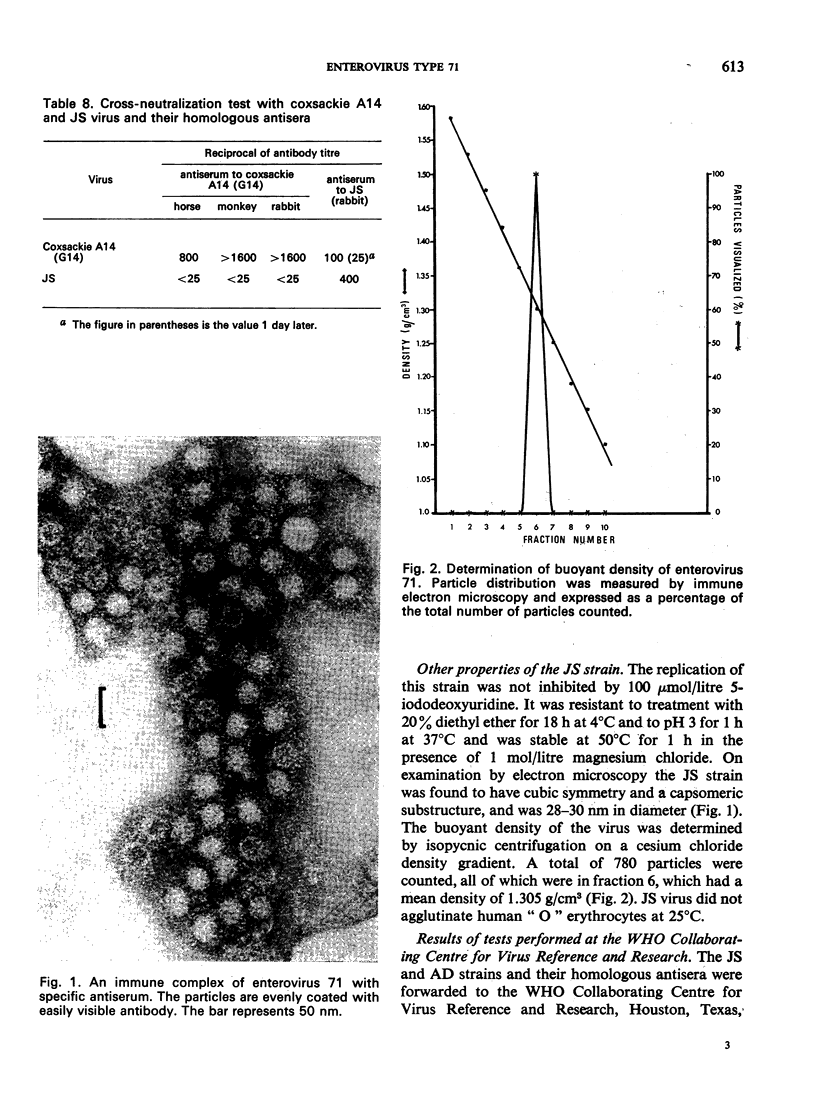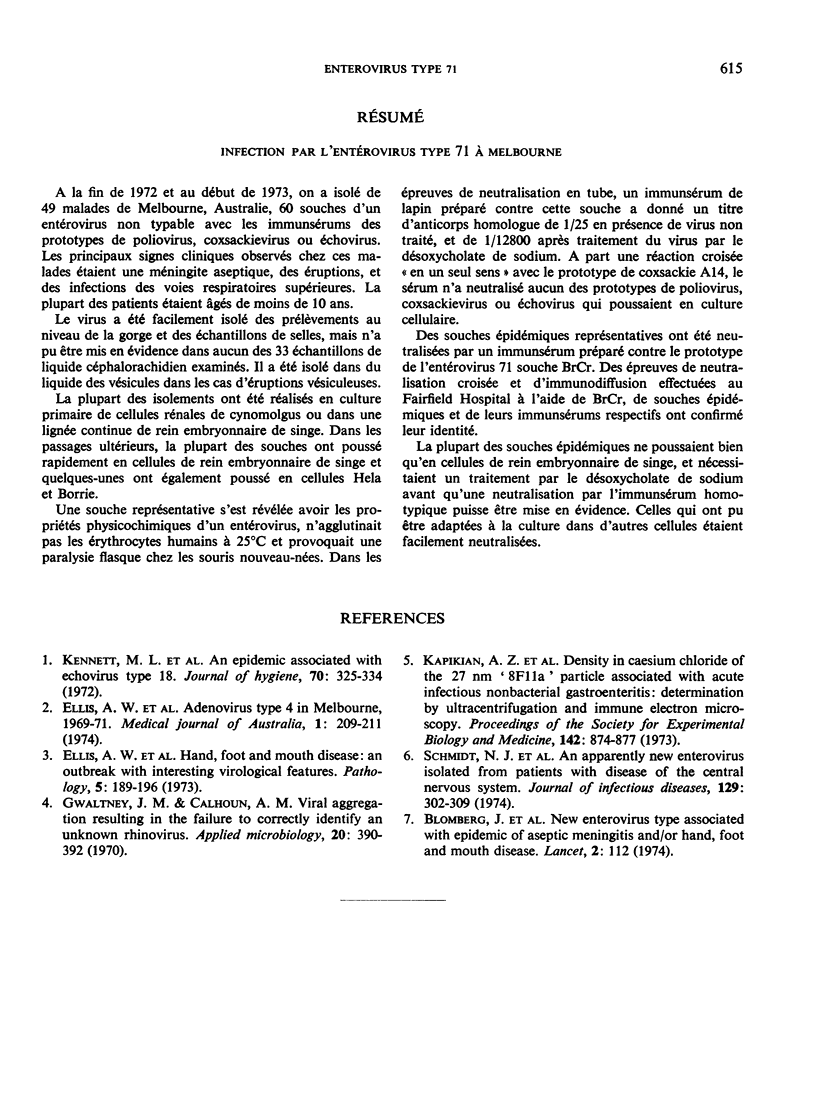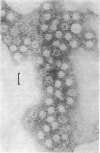Abstract
Between November 1972 and May 1973, 60 strains of a new enterovirus were isolated from 49 patients investigated at Fairfield Hospital for Communicable Diseases, Melbourne. Of these patients 39 were admitted to hospital with aseptic meningitis (which was accompanied by a rash in 6), 5 others had rash alone, 4 had acute respiratory tract infections, and 1 had infective polyneuritis. A representative strain from this outbreak had the physicochemical properties of an enterovirus but could not be identified with antisera prepared against the prototype polio, coxsackie, and echo viruses. Studies, performed in association with the WHO Collaborating Centre for Virus Reference and Research, Houston, TX, USA, showed the outbreak to be due to enterovirus 71. Most of the epidemic strains required sodium deoxycholate treatment before neutralization could be demonstrated.
Full text
PDF






Images in this article
Selected References
These references are in PubMed. This may not be the complete list of references from this article.
- Blomberg J., Lycke E., Ahlfors K., Johnsson T., Wolontis S., von Zeipel G. Letter: New enterovirus type associated with epidemic of aseptic meningitis and-or hand, foot, and mouth disease. Lancet. 1974 Jul 13;2(7872):112–112. doi: 10.1016/s0140-6736(74)91684-5. [DOI] [PubMed] [Google Scholar]
- Ellis A. W., Kennett M. L., Lewis F. A., Gust I. D. Hand, foot and mouth disease: an outbreak with interesting virological features. Pathology. 1973 Jul;5(3):189–196. doi: 10.3109/00313027309060835. [DOI] [PubMed] [Google Scholar]
- Ellis A. W., McKinnon G. T., Lewis F. A., Gust I. D. Adenovirus type 4 in Melbourne, 1969-1971. Med J Aust. 1974 Feb 16;1(7):209–211. doi: 10.5694/j.1326-5377.1974.tb93113.x. [DOI] [PubMed] [Google Scholar]
- Gwaltney J. M., Jr, Calhoun A. M. Viral aggregation resulting in the failure to correctly identify an unknown rhinovirus. Appl Microbiol. 1970 Sep;20(3):390–392. doi: 10.1128/am.20.3.390-392.1970. [DOI] [PMC free article] [PubMed] [Google Scholar]
- Kapikian A. Z., Gerin J. L., Wyatt R. G., Thornhill T. S., Chanock R. M. Density in cesium chloride of the 27 nm "8FIIa" particle associated with acute infectious nonbacterial gastroenteritis: determination by ultra-centrifugation and immune electron microscopy. Proc Soc Exp Biol Med. 1973 Mar;142(3):874–877. doi: 10.3181/00379727-142-37135. [DOI] [PubMed] [Google Scholar]
- Kennett M. L., Ellis A. W., Lewis F. A., Gust I. D. An epidemic associated with echovirus type 18. J Hyg (Lond) 1972 Jun;70(2):325–334. doi: 10.1017/s0022172400022373. [DOI] [PMC free article] [PubMed] [Google Scholar]
- Schmidt N. J., Lennette E. H., Ho H. H. An apparently new enterovirus isolated from patients with disease of the central nervous system. J Infect Dis. 1974 Mar;129(3):304–309. doi: 10.1093/infdis/129.3.304. [DOI] [PubMed] [Google Scholar]



